Planning a vegetable garden in a small space

There are five ideas in this article to make the most of a tiny space to grow vegetables. You can grow vertically, make raised beds, try SFG, square foot gardening, use containers, or grow food on a living wall.
1. Vertical gardening
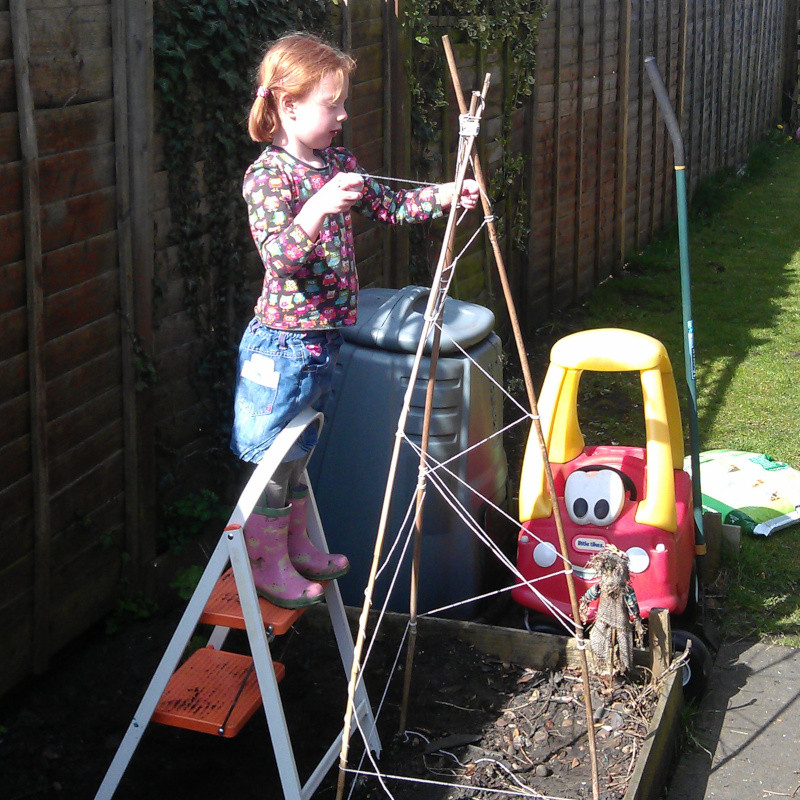
Last week I advised you to look at where the sun spends most time in your garden. Vertical gardens mean your plants will climb upwards toward the light. Peas, beans, passionfruit, and squash all have a natural climbing habit so you can just provide a support system, and they can climb to reach the sun.
Climbing peas and beans produce gorgeous flowers before they are pollinated, so they are a treat for the eye as well as food. Sunflowers are gorgeous, great for pollinators, and you can eat the seeds. Plants like squashes and courgettes love to climb, and if you give them a trellis, a bamboo frame, or a pergola, you can grow them all summer long and right up to the first frosts.
Courgettes/ zucchini are other wonderful plants to climb a vertical frame, and you can watch the flowers turn to fruit that gradually transforms into your dinner.
The soil and the base for vertical gardening must be sturdy because some vegetables weigh a lot, so make that support sturdy. You will need to alter the crops you grow so that the soil is not depleted too, so check the Crop rotation plan
2. Raised beds
Tiny gardens are perfect for raised beds because you deepen the soil height, fix the bed in the sunniest position, and you can also add a part to sit on and have tea. The benefits of raised beds for plants are multiple.
- You build them to grow vegetables so that they have rich, deep soil, and vegetables love this fertile environment.
- You remove big stones as you construct them, making them perfect for carrots and other root crops.
- Pests are easier to control, too, because you add only soil without pests. Snails and slugs will then have to climb up there to get at your plants physically. A routine of checking the bed at dusk most days will allow you to relocate the slugs or snails that come visiting.
- An extra benefit is that raised beds help anybody with mobility issues to reach the bed easily.
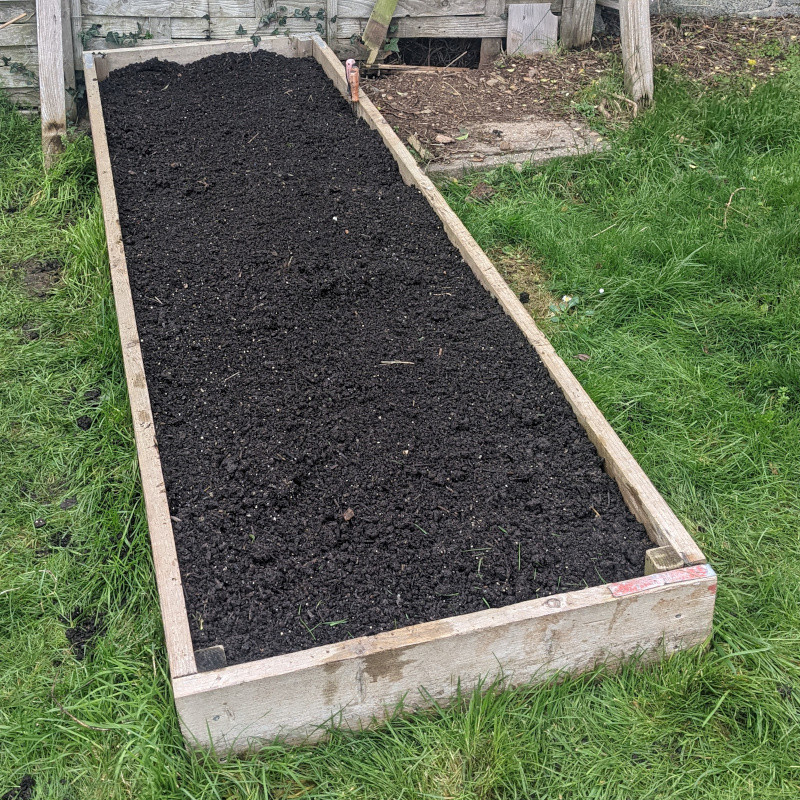
The only disadvantage with raised beds is that they are difficult to make initially, and it is more expensive than just buying some compost and a pot. You not only have to construct them, but you also need to fill the growing area with so much soil that it may need a truck to deliver it in the first place!
In my allotment, this is no worry, but in your back or front garden, you need to consider how to get that valuable soil there. I would recommend buying a truckload of manure, to begin with, as that will be fantastic for year one and year two plants in a crop rotation system. Once established, they look aesthetically tidy, as all your veg (and maybe flowers) are in one spot, and you can even use the edges to hold tools, watering cans, cups of tea, or a cool drink.
3. SFG: Square foot gardening
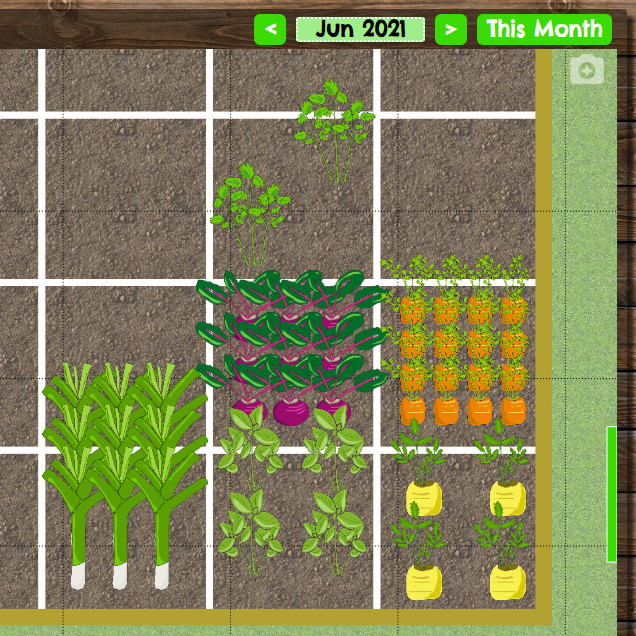
I will be writing a detailed article about SFG next week, but let’s briefly look at the principles so you can decide if it is suitable for your gardening space. This method was designed in the US in the 1970s by Mel Bartholomew, the TV presenter who wanted to make vegetable growing easy and productive.
Its purpose is to make growing food in a low-maintenance but high-production way. Instead of the traditional long straight rows of vegetable growing, his method is based on dividing your space into squares of exactly one square foot. Say you set 4 x 4 feet of a small garden aside; that is your SFG bed. He then determined precisely how many plants could fit into that exact space. Think of one large plant like cabbage in one square foot division, but in another square, you plant radishes. These are much smaller, so you can have 16 in the square next to your cabbage.
In a small garden, if your SFG bed is in the sun, then it will be very productive. However, if your SFG bed is half in the shade or close to the children’s play area, you may experience some damage from footballs, doll visits, or pets who decide to lay on it. We will look at SFG in detail next week, so check back if you are interested.
4. Container gardening
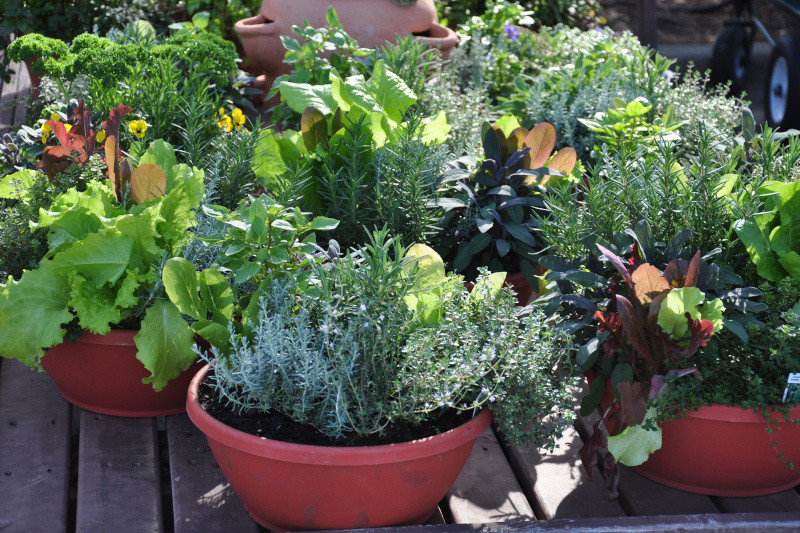
This method is ideal for anybody with a tiny outside space or even a sunny windowsill, a balcony, or a small patio area. It will allow you to grow seeds indoors to get an early start.
You can use recycled plastic pots that had other plants in them, yoghurt and cream plastic packaging recycled into new pots, old bins or toilets, old buckets, even bags for potato growing, and any container deep enough to allow your plants to thrive. You will need to make holes in containers for good drainage and also have saucers or plates to put your containers on.
The only limitation is your imagination – the internet is full of images of tomatoes in teapots and sunflowers in jewellery boxes.
You can use anything to make a container – just make a few holes with a drill (or a sharp tool like a knitting needle) in any plastic container to allow for drainage. You can use any space provided your pot fits there.
An advantage of a container is that you can move it into direct sunshine when the frosts are no longer dangerous. If the plant is still growing in the autumn/fall you can take it back indoors even when the outside temperatures drop, so your basil and parsley will continue to grow indoors.
Plants in containers need regular watering on hot summer days, so ensure they have saucers underneath, or you can place them outdoors on the soil to be watered.
5. Living walls
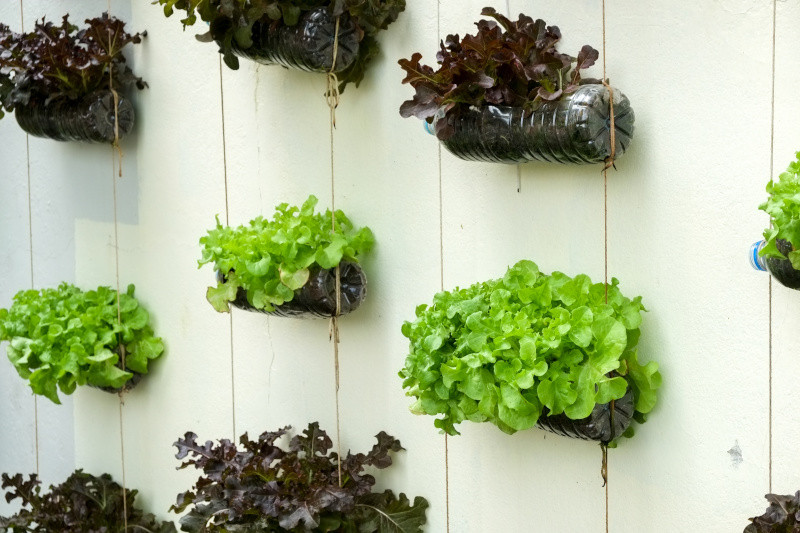
A sunny wall can easily be adapted to growing plants. You can use an existing wall and then add some modifications. Brick walls retain heat in summer, providing plants with a wonderful home. You can make a shelf and place some hooks to tie wire supports. This will be fine for a shelf of herbs or salad crops nicely positioned to catch the sun.
To make a higher bed so that the sun reaches them, place large pots on the ground with a trellis on the wall for plants to attach their tendrils, or why not recycle a pallet to place pots in?
Four pallets fixed together can make a deep raised bed, and this provides a base for a garden in a small place. If you secure it on a sunny, south-facing wall or a balcony, you can decorate or paint it first to suit the spot and then pop your plant pots in the gaps in the pallets or inside the square of pallets you made. You might need to place a board on the pallet shelves to support a row of smaller plant pots. Grow annuals (do you want me to explain this?) like radishes, salads, herbs, and plants whose roots do not go too deep here. As these are mainly annual plants, you can continuously replenish the soil in the pots so that they remain productive.
Conclusion
You should now have a clear idea of what will work in the small garden space available for growing vegetables. The important thing is to locate your veg growing area in the sunshine so that they grow healthy all summer long.
In the next article, we will look in detail and compare some methods of growing food like SFG, sowing seeds in rows, permaculture, and Hügel beds.
Don’t forget to check back next week, and if you have any gardening questions, let me know, and we can cover some of your questions later in the spring.


